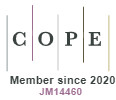O radioamadorismo como ferramenta inovadora na Educação STEM: uma revisão bibliográfica
DOI:
https://doi.org/10.5585/49.2024.27563Palavras-chave:
educação STEM, radioamadorismo, aprendizagem ativa, interdisciplinaridade, inovação educacionalResumo
Este artigo tem como objetivo explorar o uso do radioamadorismo como uma ferramenta inovadora na educação STEM (Ciências, Tecnologia, Engenharia e Matemática), através de uma revisão bibliográfica. A educação STEM é fundamental para preparar os alunos para os desafios do século XXI, desenvolvendo habilidades essenciais como pensamento crítico, resolução de problemas e colaboração. O radioamadorismo, por sua vez, oferece uma plataforma prática e envolvente para a aplicação desses conceitos, promovendo a aprendizagem ativa e interdisciplinar. A revisão inclui uma análise de estudos acadêmicos, artigos técnicos e regulamentações relevantes, destacando as vantagens e desafios da integração do radioamadorismo no currículo educacional.
Downloads
Referências
AGÊNCIA NACIONAL DE TELECOMUNICAÇÕES (ANATEL). Regulamentação do Serviço de Radioamador no Brasil. 2023. Disponível em: https://informacoes.anatel.gov.br/legislacao/resolucoes/2023/1834-resolucao-759. Acesso em: 10 jul. 2023.
AMERICAN RADIO RELAY LEAGUE (ARRL). Introduction to Amateur Radio. 2018. Disponível em: https://www.arrl.org/licensing-education-training. Acesso em: 10 jul. 2023.
BYBEE, R. W. The Case for STEM Education: Challenges and Opportunities. NSTA Press, 2013.
CARNEVALE, A. P.; SMITH, N.; MELTON, M. STEM: Science, Technology, Engineering, and Mathematics. Georgetown University Center on Education and the Workforce, 2011.
FERNANDES, P. Challenges in Implementing Amateur Radio in STEM Education. Journal of Educational Technology, v. 14, n. 3, p. 52-60, 2019.
JOHNSON, K. Impact of Amateur Radio on STEM Education. International Journal of STEM Education, v. 4, n. 1, p. 12-25, 2017.
MILLS, G. The Beginner's Handbook of Amateur Radio. McGraw-Hill, 2003.
MITCHELL, S.; THOMAS, G. Practical Applications of STEM through Amateur Radio. Educational Researcher, v. 42, n. 3, p. 131-139, 2013.
MILLER, K.; SONNERT, G.; SADLER, P. Gender Differences in the Benefits of an Influential STEM Program. Science Education, v. 102, n. 5, p. 744-760, 2018.
MOORE, T. J.; GLANCY, A. W.; TANK, K. M.; KERSTEN, J. A.; SMITH, K. A. A Framework for Quality K-12 Engineering Education: Research and Development. Journal of Pre-College Engineering Education Research, v. 4, n. 1, p. 2-13, 2014.
NATIONAL COUNCIL OF TEACHERS OF MATHEMATICS (NCTM). Principles and Standards for School Mathematics. NCTM, 2000.
NATIONAL RESEARCH COUNCIL. A Framework for K-12 Science Education: Practices, Crosscutting Concepts, and Core Ideas. National Academies Press, 2012.
UNIÃO INTERNACIONAL DE TELECOMUNICAÇÕES (UIT). Regulamento das Radiocomunicações. 2012. Disponível em: https://www.itu.int/en/ITU-R/Pages/default.aspx. Acesso em: 10 jul. 2023.
Downloads
Publicado
Como Citar
Edição
Seção
Licença
Copyright (c) 2024 Moisés Figueiredo da Silva, Luciano Henrique Trindade, Antonio Pires Barbosa

Este trabalho está licenciado sob uma licença Creative Commons Attribution-NonCommercial-ShareAlike 4.0 International License.
- Resumo 220
- PDF 124








